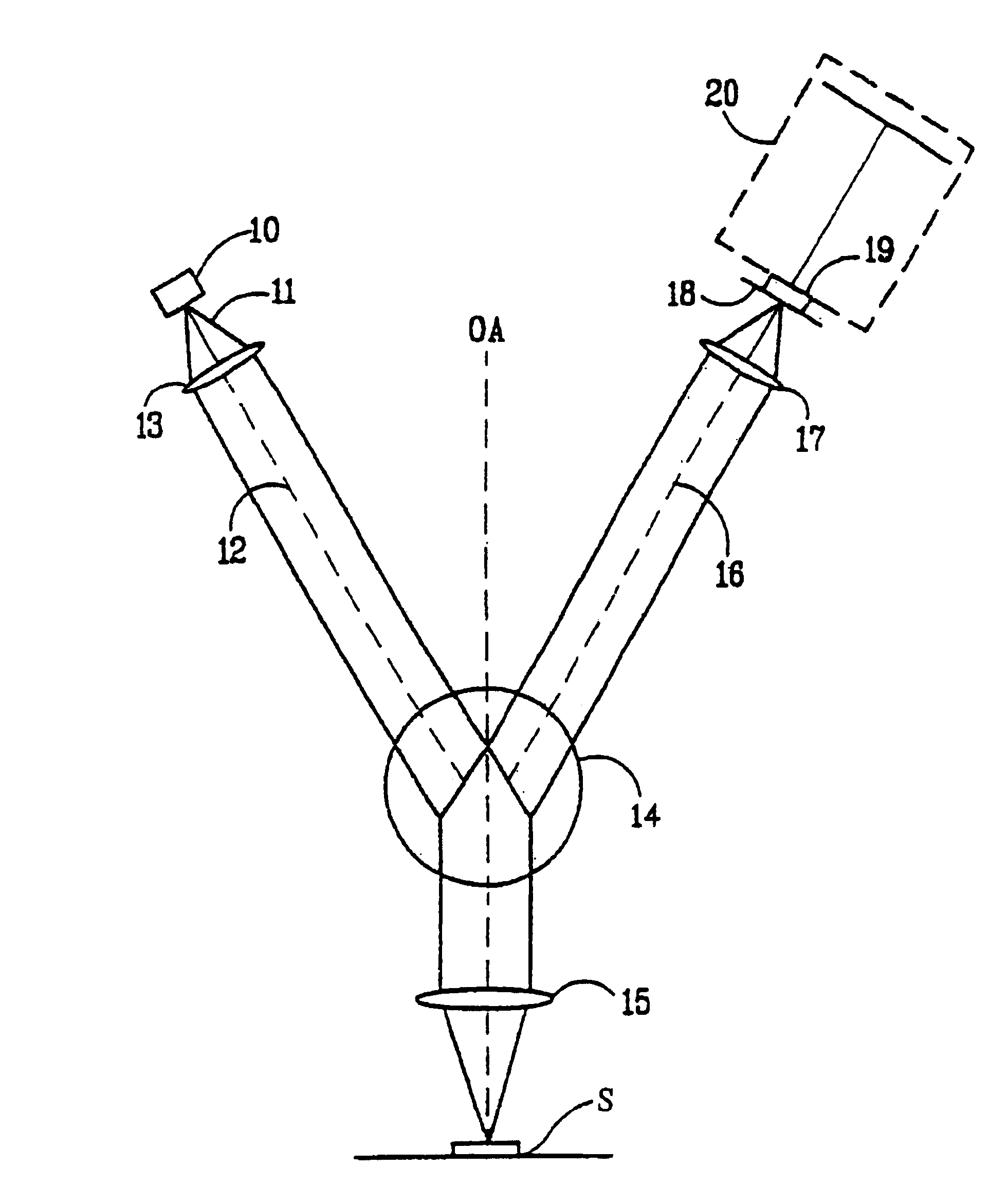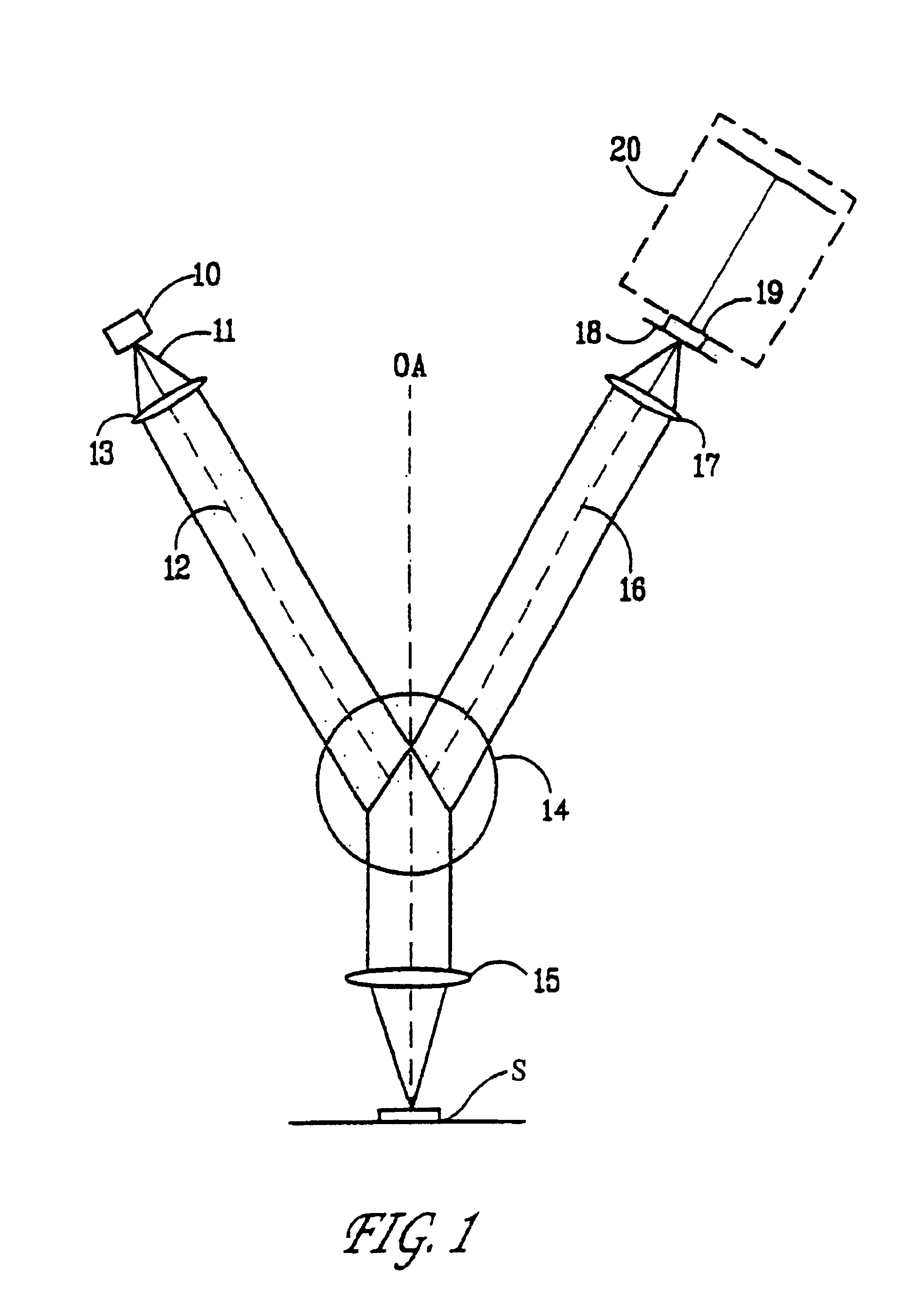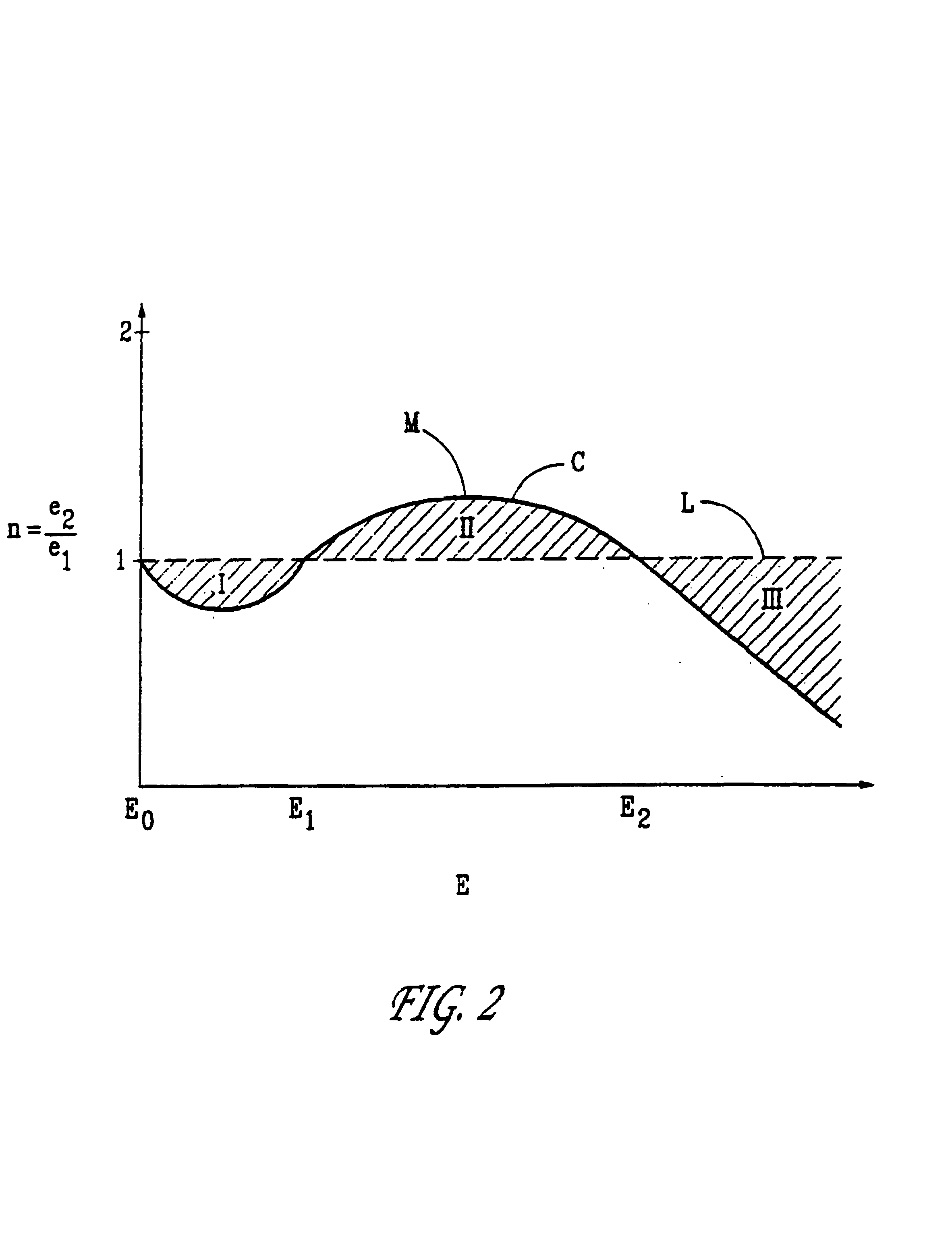Apparatus and method for secondary electron emission microscope
a secondary electron emission microscope and electron emission technology, applied in the direction of heat measurement, semiconductor/solid-state device testing/measurement, instruments, etc., can solve the problems of optical beams sensitive, whole chips may fail, and it is difficult to establish electrical connections, etc., to achieve low current density and high signal-to-noise ratio
- Summary
- Abstract
- Description
- Claims
- Application Information
AI Technical Summary
Benefits of technology
Problems solved by technology
Method used
Image
Examples
Embodiment Construction
[0028]FIG. 1 shows the basic configuration for the Secondary Electron Emission Microscopy (SEEM) apparatus of the present invention. An electron gun source 10 emits a beam 11 of primary electrons e1 along path 12. The electron beam 11 is collimated by electron lens 13 and continues along path 12. Magnetic beam separator 14 then bends the collimated electron beam 11 to be incident along electron optical axis OA normal to the surface to be inspected. Objective electron lens 15 focuses the primary electrons, e1, into a beam having a spot size in the range 1-10 mm and an incident energy on the order of 1 keV on sample S.
[0029]Primary electrons e1 incident on the sample S produce secondary electrons e2 which travel back along the axis OA perpendicular to the inspection surface to objective electron lens 15, where they are recollimated. Magnetic beam separator 14 bends the electrons to travel along image path 16. The electron beam along image path 16 is focused by projection electron lens...
PUM
| Property | Measurement | Unit |
|---|---|---|
| width | aaaaa | aaaaa |
| width | aaaaa | aaaaa |
| size | aaaaa | aaaaa |
Abstract
Description
Claims
Application Information
 Login to View More
Login to View More - R&D
- Intellectual Property
- Life Sciences
- Materials
- Tech Scout
- Unparalleled Data Quality
- Higher Quality Content
- 60% Fewer Hallucinations
Browse by: Latest US Patents, China's latest patents, Technical Efficacy Thesaurus, Application Domain, Technology Topic, Popular Technical Reports.
© 2025 PatSnap. All rights reserved.Legal|Privacy policy|Modern Slavery Act Transparency Statement|Sitemap|About US| Contact US: help@patsnap.com



